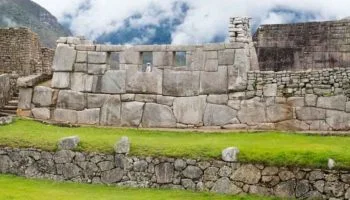
Discover the Sacred Temples of Machu Picchu: A Journey into Inca Spirituality | Travel Blog
Machu Picchu is an important testament to spirituality and cultural world heritage. Its sacred temples draw people from all parts of the world and hold secrets of Inca mysticism. Offering insights into the spiritual practices of this ancient civilization.
The temples of Machu Picchu reveal the deep connection between the incas’ people and their natural surroundings. Each structure was carefully crafted to honor deities and the forces of nature.
The sacred energy of these spaces invites a unique experience for modern travelers, whispering tales of the past.
A journey through these ancient temples immerses you in the spiritual essence of the Inca heritage. Discover these architectural wonders and delve into Inca beliefs.
Table of content
Temple of the Sun: A Cosmic Connection
The Temple of the Sun stands as one of the most representative structures at the heart of Machu Picchu. This sacred space honors the sun god, named “Inti” in quechua language and holds immense spiritual importance. This temple offers visitors a rare chance to connect with the cosmology of the Inca civilization.
The temple's precise construction highlights the advanced engineering and architectural prowess of the Incas. Its massive curved granite stone walls are similar to those of the Koricancha in Cusco. Craftsmen sculpted those stones either from the quarry or their original location, seamlessly fitting them together without mortar.
This masterpiece structure has remained remarkably intact over centuries, despite the harsh weather conditions in South America, the challenges of the Andean mountains, and the breathtaking forces of nature in the Peruvian Cloud Forest.
One of the most captivating features of the Temple of the Sun is its alignment with celestial events. The perfect example is a trapezoidal window that faces the rising sun and during the solstice. As sunlight streams through, it casts a dramatic light on the temple’s stones, enhancing their majestic beauty. These elements are intriguing and play a crucial role in celestial observations.
Some believe that it was an altar. Others suggest it was a natural formation. However, its true purpose remains a mystery. The surrounding mountains amplify the temple's presence, adding to its spiritual power and inspiring awe in all who visit.
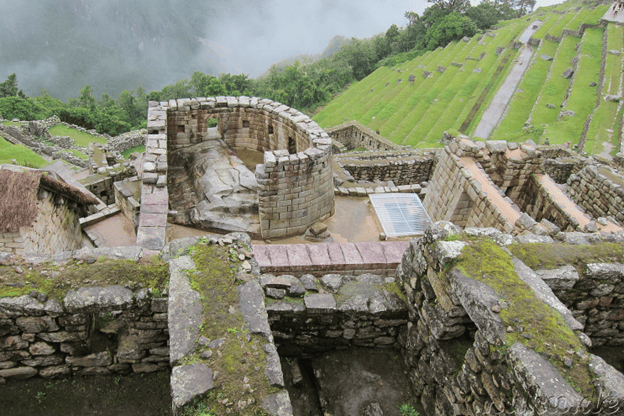
Symbolism of the Temple of the Sun
In addition to its incredible astronomical function, this temple also served as a spiritual center for the Inca citadel. Its central location further underscores its religious significance. This facilitates the celebration of sacred ceremonies and granting access to a select few.
the Incas believed that their gods communicated with the movement of celestial bodies. It provided guidance for future agricultural and spiritual actions.
The temple's high elevation on a rocky outcrop, amplifies the sense of connection to Mother Earth or Pachamama. From this vantage point, the view of Machu Picchu reveals the grandeur of the surrounding landscape. With the Urubamba River flowing from the Sacred Valley in the distance. This perspective enhances the sense of cosmic harmony
The Temple of the Sun remains a testament to the Inca’s sophisticated knowledge. It masterfully combines architecture and astronomy, reflecting their deep reverence for the natural world.
It serves as a reminder of their belief in Hanan Pacha (the upper world) where the sun god, Inti, resided. This place invites us to reflect on the deep spiritual connection the Incas had with the cosmos.
Intihuatana Stone: Where Time Stands Still
The Intihuatana Stone, often referred to as the "Hitching Post of the Sun”. This temple complements the solar ceremonies in Machu Picchu. It stands atop a small platform, facing the Huchuy Picchu and Huayna Picchu Mountains.
This carved stone with its peculiar shape, played a central role in the Inca’s astronomical practices. Especially in the main celebrations, such as Inti Raymi. Some visitors report witnessing the palpable energy at this site. It makes it one of the most powerful points in the citadel.
People often compare it to a sun clock. However, this comparison is a highly Westernized view of an object that was deeply sacred and multifaceted.
The Intihuatana was not just an astronomical tool but also held profound spiritual and people existential significance. It symbolized the profound connection between the earthly realm and the father sun, Inti.
This sacred stone represents our connection with Hanan Pacha. Serving as an anchor point to the Sun and the cosmic forces that governed life.
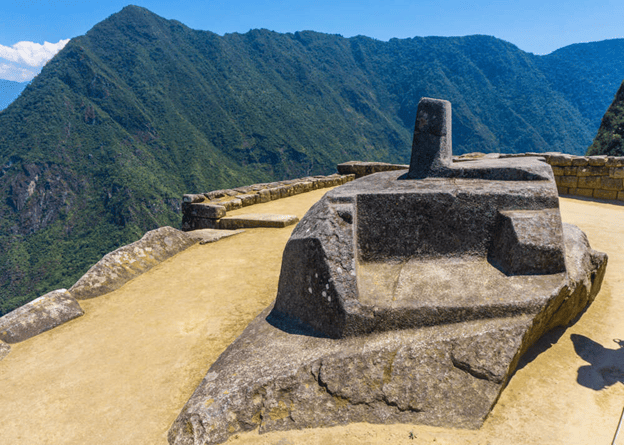
Celestial Connection and Inca Spirituality
Visiting Machu Picchu gives visitors an opportunity to appreciate the Intihuatana Stone and gain a deeper understanding of its significance. It draws attention for its dual role in Andean cosmovision and scientific purpose.
Imagine Inca priests performing sacred ceremonies. They potentially used the stone as a means of communication and connection with the cosmos. The constructions of Machu Picchu hold many secrets and cultural vestiges. One of the most compelling is the Intihuatana Stone.
Temple of the Three Windows: Symbolism and Mystery
The Temple of the Three Windows is one of the most intriguing structures at Machu Picchu. Located in the sacred plaza, it stands out due to its distinct architectural style. The temple's three perfectly aligned windows open up to offer breathtaking views of the surrounding Andean mountains and valley.
In Inca belief, the number three was sacred and represented balance and unity. Three levels of existence and even past, present, and future. Nowadays, people actively debate their exact interpretation.
As with other temples of this UNESCO World Heritage Site, the Temple of the Three Windows also carries significant symbolism. Next to one of the walls, there is an important stone. This one represents the duality of our world, both the physical and the ethereal realms. The shadow cast by the stone completes the form of the traditional Chakana.
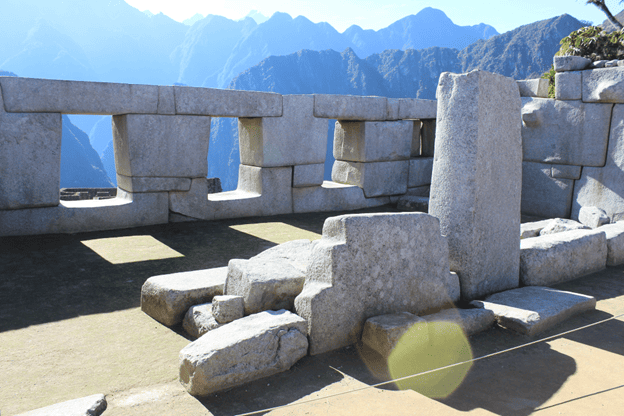
Connection to the Cosmos and Inca Spirituality
The Incas left no written records to explain their constructions. So the temple’s purpose remains a subject of mystery.
The precision of its design and the alignment with celestial bodies suggest a sophisticated astronomy. Visiting Machu Picchu and experiencing this enigmatic site offers a chance to contemplate how the Incas integrated spirituality into everyday life.
The windows themselves are a symbol of the connection between the physical world and the spiritual realm. These include the underworld (Uku Pacha), the present world (Kay Pacha), and the heavens (Hanan Pacha).
These three windows could symbolize the flow of energy between these planes. The Inca’s belief in these dimensions of existence reflects their holistic worldview. A world where the gods and nature played essential roles.
Standing within the temple, visitors are reminded of the ancient power that the Incas attributed to natural forces. Including celestial entities and terrestrial ones, such as Lake Titicaca in Puno. Element concepts of the duality and the three-part division of their world. It resonates through the sacred structures and the surrounding landscape.
Sacred Plaza: Heart of Inca Rituals
The Sacred Plaza at Machu Picchu served as a central space for Inca religious ceremonies. Inca people from all over Peru traveled along the Inca Trail to participate in these sacred events. A sacred space where important rituals and celebrations took place in this sacred space.
As part of the temples of Machu Picchu, the Sacred Plaza was a vital site for Inca spirituality. The significance of the Sacred Plaza also lies in its strategic position within the Inca citadel. Its location connects key structures like the Temple of the Sun and the Temple of the Three Windows.
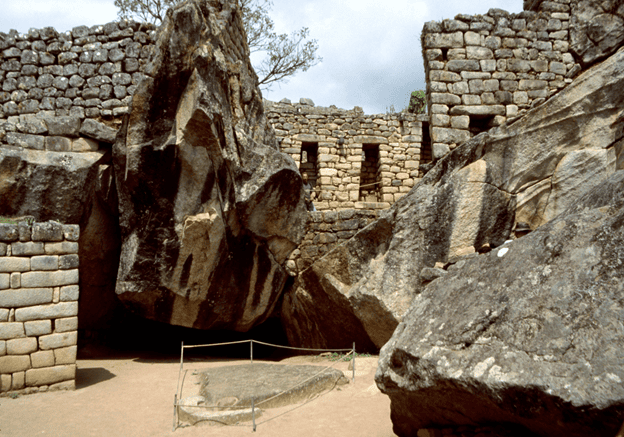
A Place for Cosmic and Ceremonial Connection
The temple of the condor was built to facilitate more intimate rituals. One of the key rituals likely performed at this archaeological site involved the Andean condor. This bird symbolizes the heavens and acts as a messenger between worlds.
This connection between animals and gods reflects the holistic worldview that permeated the entire Inca Empire. A vestige of this survives in Peruvian culture from earlier pre-Inca civilizations. This is evident in monuments depicting animals, such as the Colibrí in the Nazca Lines.
Standing in Machu Picchu, you can imagine the vibrant ceremonies that once took place. Great Celebrations or Raymi, surrounded by towering stone structures and majestic views of the mountains.
This citadel represents one of the best-conserved sites at the heart of the Inca's spiritual and cosmic practices. It's a visit you have to experience at least once in your lifetime making it a part of your vacation to Cusco.

